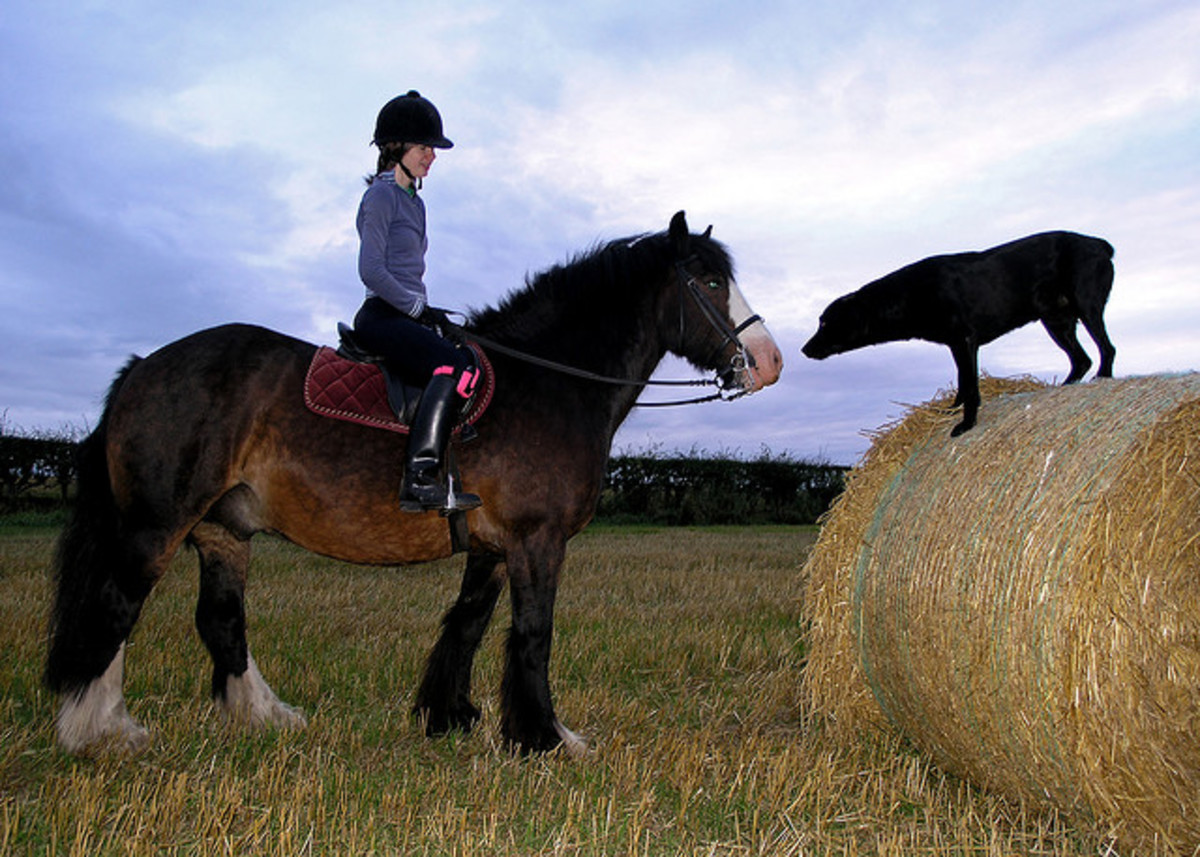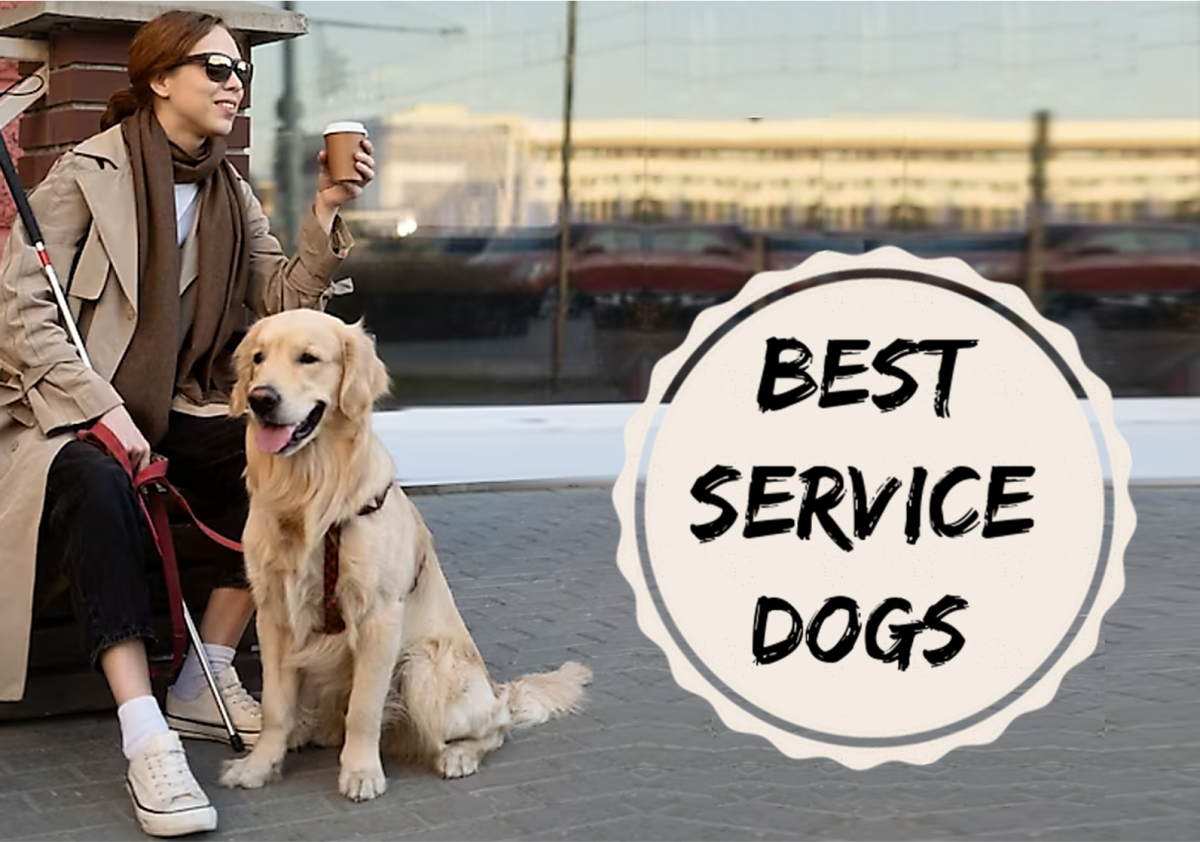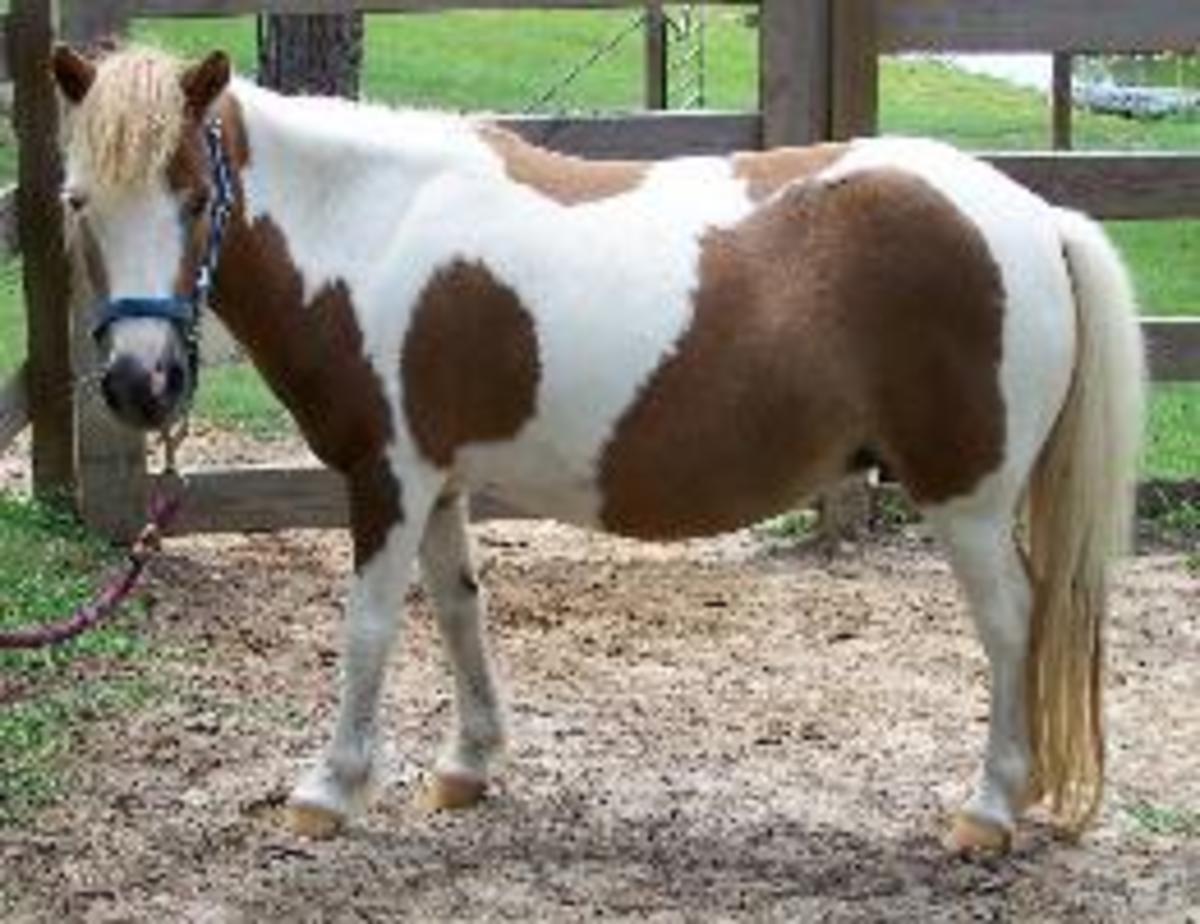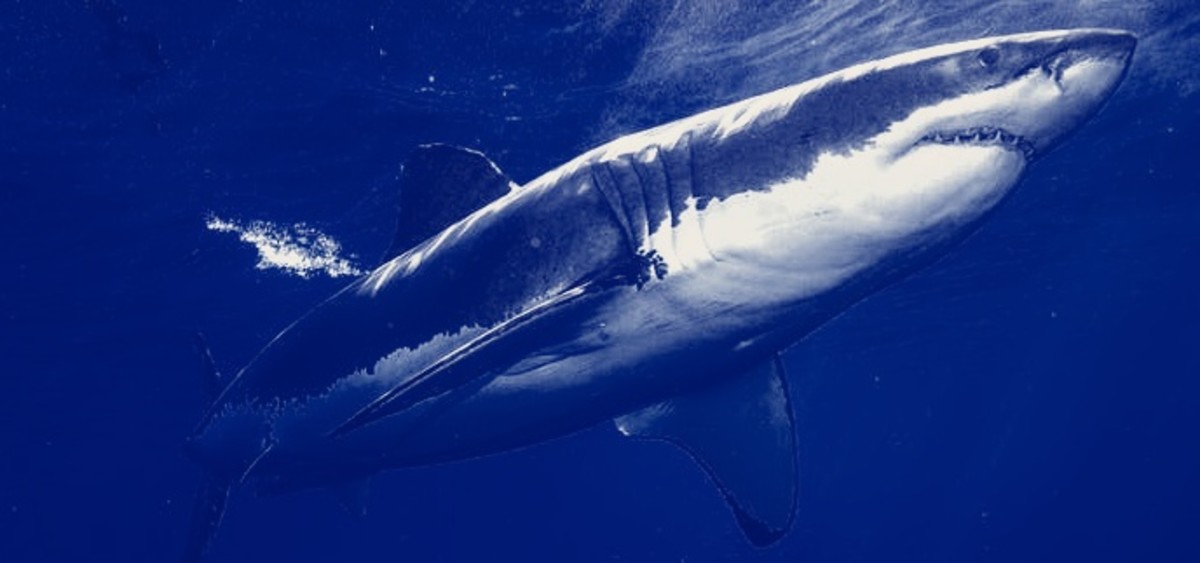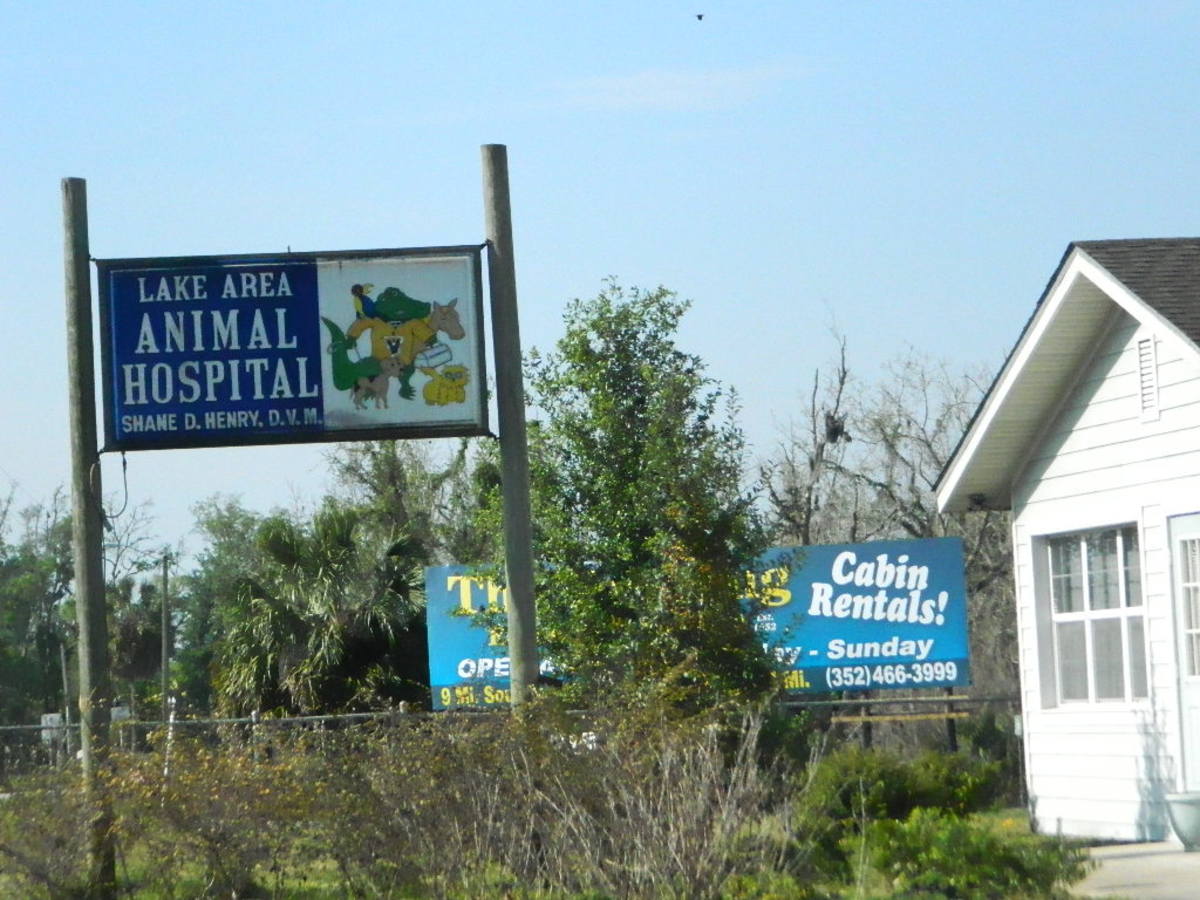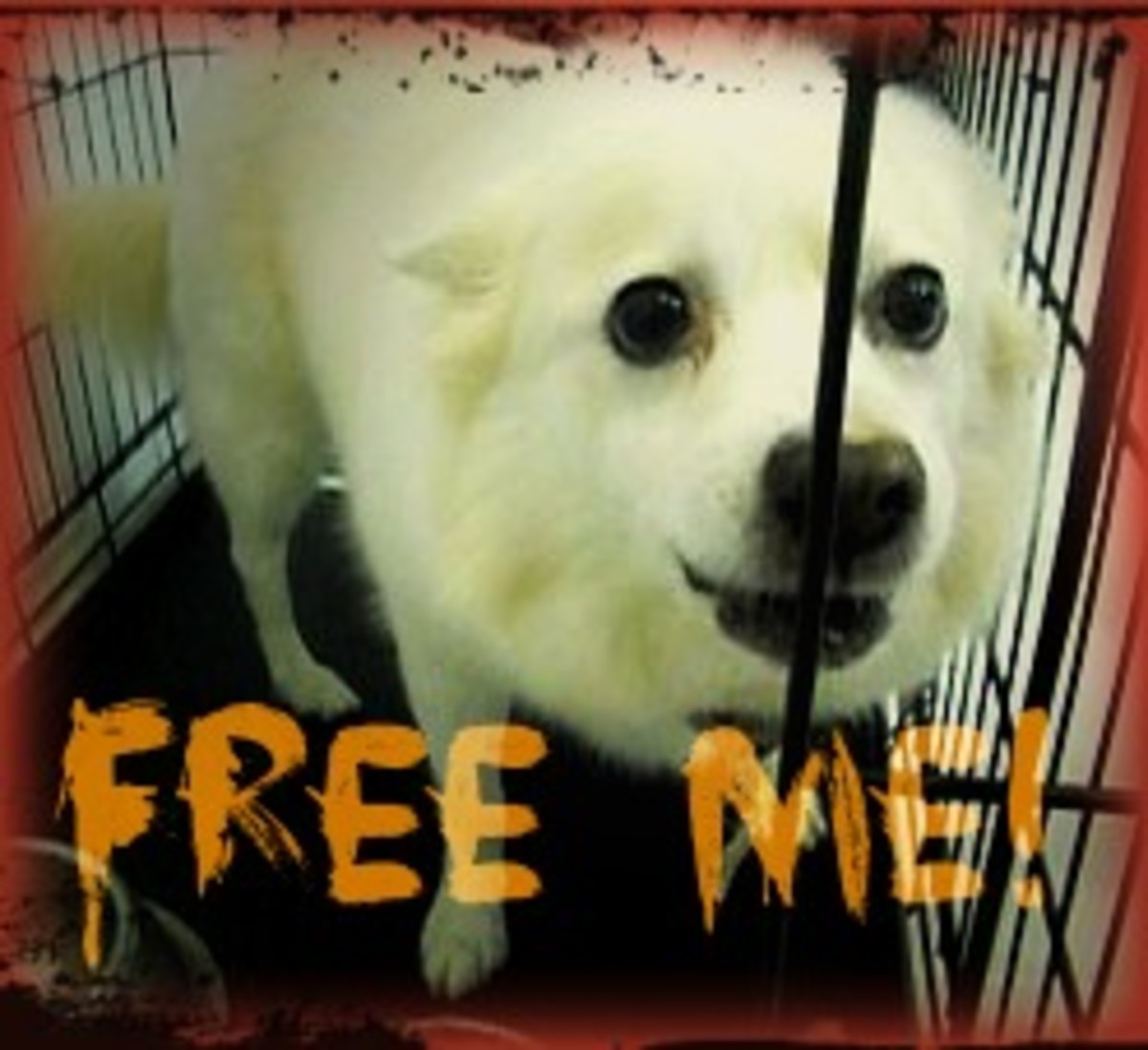Equality among Service Animals
What does it mean for an animal to be a service animal? The U.S. Department of Justice defines service animals as animals that work or perform tasks for people with disabilities. The main tasks that qualify an animal as a service animal include: guiding blind people, pulling a wheelchair, alerting deaf people, warning and protecting a person who suffers from seizures, helping with the management of medication and disorders like Post Traumatic Stress Disorder, and/or assisting with anxiety attacks (ADA). For most people this means only a service dog, however, that is no longer true; service animals now include miniature horses and Capuchin monkeys. Many people believe that dogs are the only real service animals or that canines make the most reliable service animals. This assumption has been shown to be false. No one species of a service animal is better than another as each species tends to be suitable to certain disabilities, receive different training, and possess various advantages and disadvantages.
Distinctive disabilities often require animals of a specific size; disabilities that require an animal to act as a guide require a medium to large sized animal, while people who need either an early warning or an animal to fetch objects, tend to be better off with a small to medium animal. A miniature horse or a canine are often the most reliable option for a person who needs a guide animal. Miniature horses tend to be approximately thirty-four to thirty-eight inches tall and weigh about one hundred to one hundred-fifty pounds. Canine guides are traditionally Golden Retrievers, Labradors, and/or German shepherds (Guide Dogs of America RSS). For an alert animal, a small canine such as a Poodle, Cocker Spaniel, Shih Tzu, or Chihuahua proves to be best as their small statute allows them to easily be with their handler at all times (Assistance Dogs International). A Capuchin monkey makes the most dependable service animal for a person with a mobility disorder because their opposable thumbs make it easy for them to fetch objects and turn pages in books. Capuchin monkeys typically have light brown, mustard yellow, and/or black coloring, with coarse black fur at the top of their heads, light colored underbellies and shoulders, and a coiled tail (Anderson).
Service dogs can act as a Seeing Eye dog, Autism Assistance dogs, Diabetic Alert dogs, Hearing Ear dogs, Mobility Assistance dogs, and Seizure Assistance dogs. Autism Assistance dogs primarily act as a security item or transitional object; a child with autism often latches onto the parents and refuses to do basic activities like sleeping without them. In these situations, a service dog can act as a substitute allowing the autistic child to sleep in a bed without his or her parents. The dog also follows the child around preventing wandering or escaping (see fig. 1). For diabetes, Diabetic Alert dogs are trained to smell the chemical changes that happen as the insulin levels in the blood increase or decrease and alert the person or the person’s caregiver before the insulin reaches unsafe levels. Dogs that assist people with a hearing impairment are called Signal/Hearing Ear dogs; they are trained to recognize sounds that indicate danger and alert their handler; one example of this would be a fire alarm. People who suffer from mobility problems are able to receive assistance in the form of a Mobility Assistance dog. Mobility Assistance dogs serve to increase a mobility impaired person’s independence by performing retrieval tasks as well as opening and closing doors. People who suffer from seizures often rely on a Seizure Assistance dog to alert them before a seizure occurs.The forewarning that a Seizure Assistance Dog gives allows the person to get to a safe area to have their seizure (4 Paws for Ability).
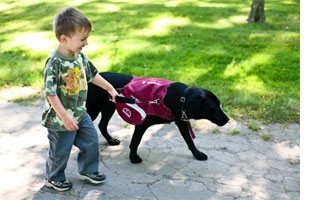
Miniature horses serve as guide animals, although in a slightly different capacity. Guide horses help people who suffer from visually impairment, otherwise known as blindness. According to Janet and Don Burleson, founders and owners of the Guide Horse Foundation “Horses are natural guide animals and have been guiding humans for centuries” (Burleson). Janet Burleson writes that, “In nature, horses have been shown to possess a natural guide instinct. When another horse goes blind in a herd, a sighted horse accepts responsibility for the welfare of the blind horse and guides it with the herd” (Burleson). Miniature horses share their regular sized-counterpart’s natural ability to act as a guide. This ability makes them a natural guide animal for a visually impaired person.
Unlike horses and dogs capuchin monkeys have thumbs which allow them to act as service animals for people who suffer from mobility impairment either due to a birth defect or a permanent injury. Many people who suffer from a mobility impairment find themselves unable to accomplish everyday tasks such as opening a bottle of juice, fetching the phone and dialing it, working the microwave, throwing out a piece of trash and/or turning a page in a book (see fig. 2). Trained Capuchin monkeys are able to act as a service animal for these people because they have small hands with thumbs that allow them to complete simple tasks with the same ease that a non-impaired person could (Helping Hands).
Service dogs are trained by various organizations to perform their duties as a service dog; the same basic program applies for all service dogs, but there are minor differences in the training of different types of service dogs. A service dog goes through five stages of training before becoming a certified guide dog. The first stage of becoming a guide dog starts with fostering; the organization places a potential guide dog with a family for socialization, training in basic commands, and potty training. When the dog returns from its foster family, it enters stage two of the training program. During stage two, the organization begins testing on the dog’s reaction to other animals, temperament around people, overall physical health, and how it deals with distraction. If the dog passes the assessment, then it moves onto the next stage. During stage three, a dog trainer places the dog in a group with six to eight other dogs and a guide dog instructor. The instructor teaches the dogs how to ignore distractions, walk in a straight line, indicate a curb, and follow more difficult commands such as stop, forward, and straight to the curb. The fourth stage teaches the dog to avoid obstacles, wear a harness, and show correct behavior (Guide Dogs Victoria). The fifth stage varies depending on what type of disability the dog’s future handler will have. A trainer teaches both the Seeing Eye dog and the Autism Assistance Dog how to keep a handler safe while boarding a train, walking through traffic, finding locations, and navigating changes in elevation. A Hearing Ear Dogs learn how to notify its handler when it hears certain noises such as a fire alarm or a tornado siren. The Diabetic Alert Dog and the Seizure Assistance Dog learn to alert their handler before their blood sugar gets too low and before a seizure occurs. A Mobility Assistance Dog learns to open doors and fetches objects on command (4 Paws for Ability).

Miniature horses enter a seven step training program before being assigned to a handler. The program begins with basic lead training, training to respond to verbal commands, moving at an appropriate speed, and negotiating everyday obstacles. Voice command recognition is learned in step two; this step includes teaching the guide horse to respond to twenty-three different voice commands. Step three, the stationary obstacle avoidance, is when the horse learns to alert their handler to obstacles in their path. Miniature horses naturally avoid obstacles; however, they need to learn to see their handler as an attachment of themselves. The horse also learns to navigate sidewalks and streets without spooking. In step four, the horse learns to avoid moving obstacles such as pedestrians, cars, and bicycles. During step five, the horse is taught to surface elevation change recognition. This phase of training teaches the guide horse to identify surface elevation changes and signal their handler appropriately; elevation changes may include ramps, steps, and curbs. The horse is housebroken for the sixth step; the horse is taught to “go” in certain areas. For the final step of training, the horse is taught intelligent disobedience; the horse needs to have the thought process to disobey an order from their handler that could place their handler in danger (Burleson).
The Capuchin monkeys begin their training by being placed in a foster home. During the fostering stage, the monkey is socialized, potty trained, and taught how to interact with people. When Helping Hands judges the monkey ready to begin service training, the foster family returns the monkey to Monkey College. In Monkey College, the Capuchin learns how to help people with everyday tasks including learning to open bottles and cans, and picking up dropped objects on command. Monkeys have the small, dexterous hands needed to perform specialized tasks that require thumbs. The monkey must learn to understand different signals from a laser pointer. Not all movement impaired people can communicate their needs through speaking; many rely on a laser pointer directed by mouth control. Most monkeys are ready for placement within eighteen to twenty-four months after entering the Monkey College (Helping Hands).
Canines, miniature horses, and Capuchin monkeys all come with different advantages and disadvantages. Service dogs are universally recognized as a service animal; people who have a service dog with the proper paperwork almost never have to deal with arguments about whether or not their guide animal can accompany them places. Service dogs also do not need special transportation and can easily be accommodated in most public places such as restaurants and shopping centers. Service dogs, when trained, can work with the various disabilities unlike the guide horse and the Capuchin monkey; who can only assist people who suffer from a visual impairment and a mobility impairment respectively. However canines typically only live nine to fifteen years. Minus the time that the dog was in foster care and the time it took to have the dog trained, means that a person who uses service dogs will have multiple service dogs during their lifetime; the person will have to go through the training process and getting acquainted with their new dog, and learning to trust the dog every eight to fourteen years.
Unlike a guide dog, a miniature service horse can live anywhere between thirty to fifty years; making them lifelong companions for many. Guide horses receive specific training to teach them to remain calm even in extremely chaotic situations (Burleson). According to Don and Janet Burleson, miniature horses “have eyes on the sides of their heads, they have a very wide range of vision, with a range of nearly 350 degrees (Burleson). This makes the miniature horses an ideal guide animal because they are capable of independent eye movement, allowing them to track potential danger with each eye (Burleson). The disadvantage with miniature horses comes with transportation; due to the size of the miniature horse they require a special van for transport. These horses often prove to be the only option for blind people with either dog allergies or a fear of dogs. The other main problem emanates with public opinion; not many people are aware that miniature horses can be guide animals. This lack of knowledge often leads to misunderstandings and occasionally law suits; due to business owners contesting the blind handler’s right to bring their guide horse into buildings.
Having a Capuchin monkey comes with its own set of advantages and disadvantages. Capuchin monkeys make better service animals for people who suffer from a mobility impairment because they weigh about six to nine pounds and stand fifteen inches tall; this makes it easy for a handler to transport the monkey. The monkey has small dexterous fingers and opposable thumbs allowing it to not only fetch objects and open doors like a dog, but also open bottles, turn book pages, and dial a phone. These monkeys also live for thirty to thirty-five years giving them a longer lifespan than a dog, but a shorter one than a miniature horse. Problems arise due to the lack of public knowledge; much like the miniature horse few people are aware that Capuchin monkeys can be service animals. This lack of knowledge can lead to problems if the disabled person desires to bring their monkey with them to public places; these monkeys are also often mistaken for being exotic pets instead of a service animal.
Canines, miniature horses, and Capuchin monkeys are all trained to assist with different disabilities. People as a whole need to understand that service animals come in all shapes and sizes; no on service animal is predeterminately better than another. A business owner cannot turn turn away a service horse any more than they could a service dog because the term service animal means an animal that performs tasks for people with disabilities. When considering acquiring a service animal for assistance with a disability, people need to weigh all the advantages, disadvantages, and their specific condition, before deciding which species would be the most beneficial to them.
Works Cited
4 Paws for Ability. 4 PAWS for Ability, 2013. Web. 22 Mar. 2013.
<http://4pawsforability.org/>.
Anderson, Rebecca. 2003."Brown Capuchin." Animal Diversity Web. University of Michigan
Museum of Zoology, 2003. Web. 23 Mar. 2013.
<http://animaldiversity.ummz.umich.edu/accounts/Cebus_apella/>.
Assistance Dogs International. Assistance Dogs International, 2013. Web. 27 Mar. 2013.
<http://www.assistancedogsinternational.org/faq-category/dog-breeds-behaviour/>.
Autism Service Dogs in School: What Does the Law Say. 2012. Photograph.
The Law Offices of Bonnie Z. Yates. Web 1 March 2013.
<http://www.bonniezyates.com/resources/articles/autism-service-
dogs-in-school-what-does-the-law-say/>.
"Breeds and Matching Process." Guide Dogs of America RSS. Guide Dogs of America RSS,
2012. Web. 27 Mar. 2013. <http://www.guidedogsofamerica.org/1/programs/training-
breeding/breeds-and-matching-process/>.
Bourg, Jim. Creature Comfort. The Telagraph. 2011. Web. 1 Apr. 2013.
<http://www.telegraph.co.uk/science/8280553/Dogs-for-the-Disabled-and-assistance-
animals-a-friend-for-life.html>.
Burleson, Don, and Janet Burleson. Guide Horse Foundation. Guide Horse Foundation Inc.,
2005. Web. 10 Mar. 2013. <http://www.guidehorse.org/>.
Guide Dog Training." Guide Dogs Victoria. Guide Dogs Victoria, 2012. Web. 23 Mar. 2013.
<https://www.guidedogsvictoria.com.au/about-our-dogs/guide-dog-training/>.
Helping Hands. Monkey Helpers for the Disabled Inc, 2008. Web. 10 Mar. 2013.
<http://www.monkeyhelpers.org/>.
Service Animals." Ada.gov. U.S. Department of Justice, 12 July 2011. Web. 22 Mar. 2013.
<http://www.ada.gov/service_animals_2010.htm>.
Whitmarsh, L. "The Benefits Of Guide Dog Ownership." Visual Impairment Research 7.1
(2005): 27-42. Academic Search Complete. Web. 23 Mar. 2013.

